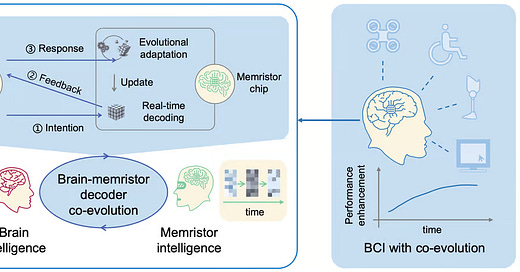Brain-Computer Interface (BCI) Technology has been under development since the 1960s. The first patients for artificial eyes were treated in the late 1970s. The pace of development has progressed impressively since then.
The advances being made were a largely niche topic of conversation until Elon Musk created Neuralink in 2016. The company is currently recruiting candidates for its clinical trial. The aim is to install the company’s chip which allows remote access to computers by paralysed patients.
The first prototype was installed in a patient last year. He is still alive so that is a bonus. The primary issue was that some of the 1024 electrodes attached to his brain became dislodged within a month and that reduced the speed of the brain-computer interface.
Historically, the primary issue with implants is the body creates scar tissue around the placement site or rejects the implant altogether. That’s obviously much more troubling when dealing with the brain. The focus of much of the research over the last several decades has been to overcome this limitation.
So why is this relevant today?
The first thing is that the mass firing of officials at the USA’s Food and Drug Administration means there are fewer people with direct oversight of Neuralink’s activities. That may either accelerate or retard the pace of progress in the sector. My sense is that the pace of the technological innovation is unlikely to be slowed down.
There are legitimate ethics considerations for the sector since the direction of travel of information can go both ways. That goes way beyond patient privacy concerns.
An article in the South China Morning Post this morning caught my attention. Here is a section:
Unlike traditional BCIs, which decode the brain’s signals, the breakthrough enables the brain and device to learn from each other, delivering a stable performance over time, according to the Tianjin University and Tsinghua University researchers.
And
The system features a machine learning loop that continuously updates the decoder to adapt to brain’s signal variations, and a brain learning loop that helps the user to improve control of the device through real-time feedback.
“Compared to traditional digital BCIs, our dual-loop system increased efficiency by over 100 times while reducing energy consumption by 1,000 times,” Xu said.
Importantly these kinds of interface do not require surgery. The interface is conducted via headset. This greatly increases the number of possible patients and can be performed without the need for clinical trials.
Here’s where the story gets interesting. An article on cryptobriefing.com two days ago talked about a Chinese hedge fund researcher who burned 500 Ethereum tokens in an effort to ensure his message is etched into the token’s blockchain.
His complaint is that:
“There is a new mode of crime in which the victim is gradually deprived of his senses of desire until he becomes a complete slave to the digital machine, and if one day I become a victim of the final stage, I will leave the world.”
The fact this accusation is coming from Chinese researchers in particularly instructive. That carries more weight today when it was hedge fund researchers that came up with the DeepSeek AI innovation.
The Communist ideal is total equality in service to the Party. Removing free will is an unmitigated success story from that perspective. The simple reality is that China does not have the same ethical roadblocks many other countries impose.
They will develop whatever technology is necessary to further their aims. We are not at the point where a computer can be used to re-program troublesome citizens but that is certainly the end point of this research.




